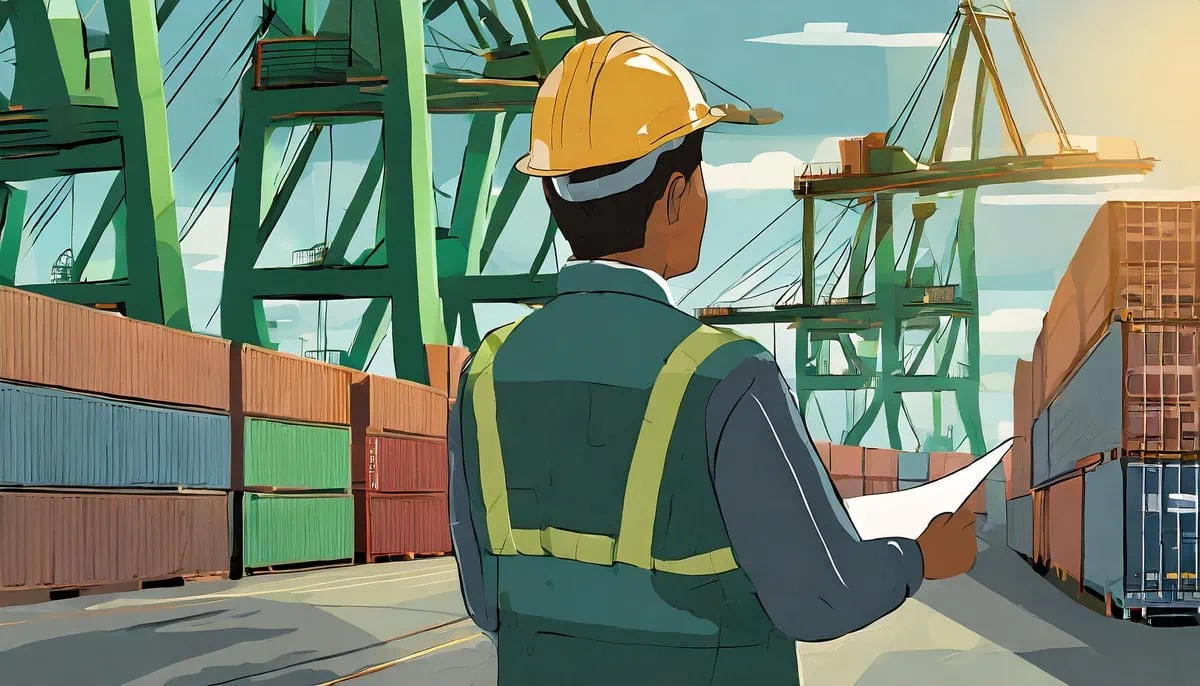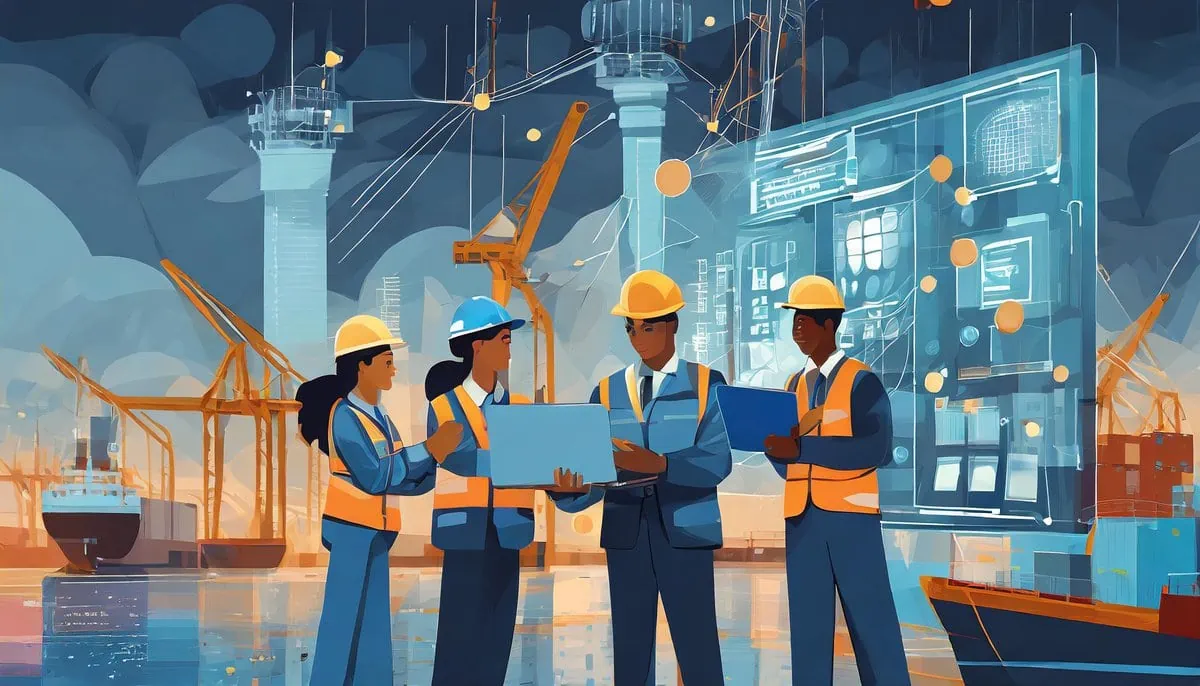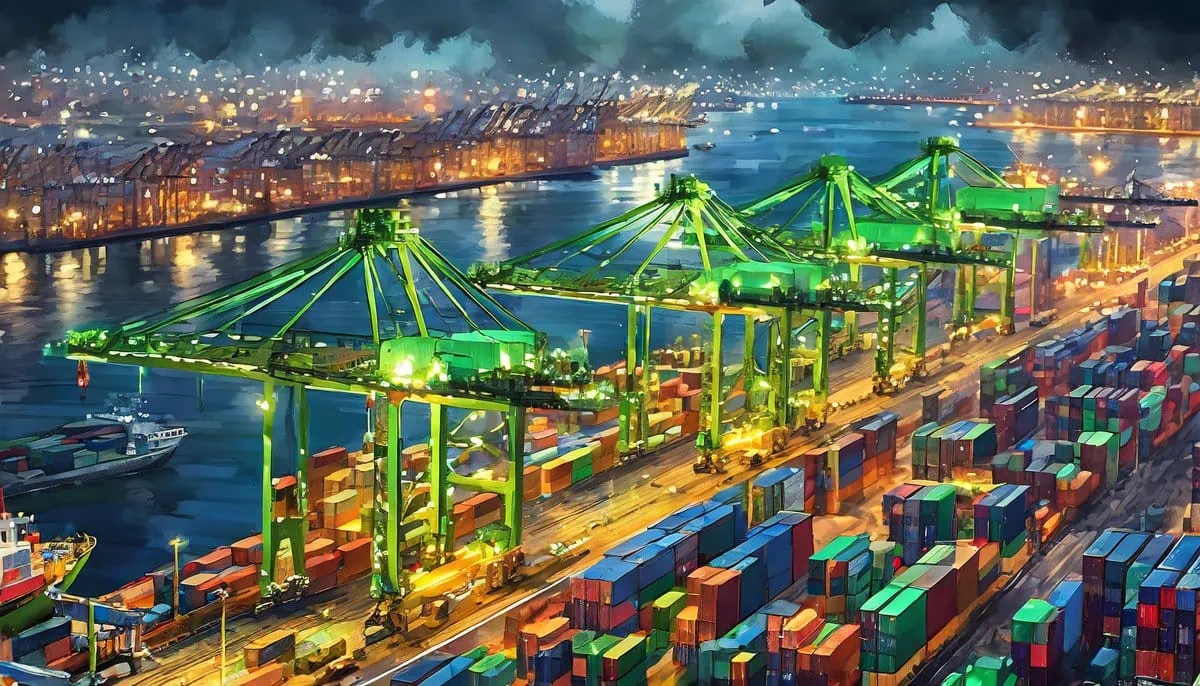
Exploring the Port Industry: Understanding the Roles and Responsibilities
The port industry is a complex and fascinating field that plays a crucial role in global trade and commerce. It involves the movement of goods and cargo through ports, which are critical hubs for international trade. To ensure the smooth operation of ports, various roles and responsibilities are assigned to different individuals and teams. In this article, we will explore the different roles within the port industry, their responsibilities, and the skills and qualifications required for each position.
Operations Roles
The operations team is responsible for ensuring the smooth movement of cargo and ships in and out of the port. Some of the key roles include:
- Quay Crane Operators: Operate cranes to load and unload cargo from ships. They must have excellent hand-eye coordination, spatial awareness, and the ability to work at heights.
- Terminal Tractor Drivers: Drive tractors to move cargo around the port. They must have a valid driver’s license, excellent driving skills, and the ability to navigate through tight spaces.
- Stevedores: Load and unload cargo from ships. They must be physically fit, able to work in a fast-paced environment, and have excellent communication skills.
- Cargo Handlers: Manage the movement of cargo within the port. They must have excellent organizational skills, be able to work under pressure, and have a keen eye for detail.

Management Roles
The management team oversees the entire port operation, making strategic decisions to optimize efficiency and productivity. Some of the key roles include:
- Port Managers: Oversee the entire port operation, including budgeting, planning, and personnel management. They must have excellent leadership skills, be able to think strategically, and have a deep understanding of the port industry.
- Operations Managers: Manage the day-to-day operations of the port, including scheduling, logistics, and personnel management. They must have excellent organizational skills, be able to think critically, and have a keen eye for detail.
- Logistics Coordinators: Coordinate the movement of cargo and ensure it reaches its destination on time. They must have excellent communication skills, be able to think critically, and have a deep understanding of logistics and supply chain management.
- Safety Officers: Ensure the port is a safe working environment, including implementing safety protocols and conducting safety inspections. They must have excellent communication skills, be able to think critically, and have a deep understanding of safety regulations and protocols.

Support Services Roles
The support services team provides essential services to keep the port running smoothly. Some of the key roles include:
- Maintenance Workers: Maintain and repair equipment, including cranes, tractors, and other machinery. They must have excellent technical skills, be able to work with their hands, and have a keen eye for detail.
- IT Support: Ensure the port’s technology infrastructure is functioning correctly, including hardware, software, and network systems. They must have excellent technical skills, be able to think critically, and have a deep understanding of IT systems and networks.
- Administrators: Manage administrative tasks, including human resources, finance, and customer service. They must have excellent organizational skills, be able to think critically, and have a keen eye for detail.
- Security Personnel: Ensure the port is secure, including monitoring CCTV cameras, patrolling the port, and responding to security breaches. They must have excellent communication skills, be able to think critically, and have a deep understanding of security protocols and regulations.

The port industry is a vital component of global trade and commerce, and its efficient operation relies on the coordination of multiple roles and responsibilities. By exploring the different positions within the port industry, we gain a deeper understanding of the complexity and importance of this sector.
The port industry’s impact on the global economy and our daily lives is significant, and it’s essential to appreciate the hard work and dedication of the individuals who keep the ports running smoothly. As we continue to navigate the challenges and opportunities of global trade, it’s crucial to recognize the critical role that ports play in facilitating economic growth and development.
Lesson Plan
Lesson Focus and Goals:
This lesson aims to broaden the understanding of the various job roles and functions within a port beyond the commonly known ones such as quay crane operators and truck drivers. Students will explore the diverse array of jobs available in port operations, management, and ancillary services. The goals include gaining insights into the different skill sets required for these roles and understanding the interconnectedness of various jobs in ensuring smooth port operations.
Materials Needed:
- Computers or devices with internet access
- Access to articles, videos, or educational resources on port operations and job roles
- Whiteboard and markers
- Presentation software or tools
Learning Objectives:
By the end of the lesson, students should be able to:
- Identify and describe various job roles within a port, including operations, management, and support services.
- Understand the importance of each job role in contributing to efficient port operations.
- Discuss the skill sets and qualifications required for different port-related jobs.
Structure/Activity:
Warm-Up:
- Prompt a discussion about the different activities and functions that take place within a port beyond loading and unloading cargo. Encourage students to brainstorm as many job roles as they can think of.
- Introduce the lesson objective of exploring the diverse job roles within a port.

Part 1: Introduction to Port Operations and Job Roles (30 minutes)
- Provide an overview of port operations, including the key functions and departments involved.
- Present a list of various job roles within a port, categorizing them into operations, management, and support services.
- Showcase video clips or case studies highlighting specific job roles and their importance in port operations.

Part 2: Exploration of Job Roles (40 minutes)
- Divide students into small groups.
- Assign each group a category of job roles (operations, management, or support services).
- In their groups, students research and discuss the different job roles assigned to them, including responsibilities, required skills, and qualifications.
- Each group prepares a brief presentation to share their findings with the class.

Part 3: Class Discussion (20 minutes)
- Have each group present their findings, focusing on the diversity of job roles within a port.
- Facilitate a class discussion on the significance of each job role in ensuring efficient port operations.
- Encourage students to reflect on the skills and qualifications needed for various port-related jobs.

Assessment Criteria:
- Knowledge of Port Operations: Assess students’ ability to identify and describe various job roles within a port.
- Critical Thinking: Evaluate students’ ability to reflect on the skill sets and qualifications required for various port-related jobs.
- Participation in Discussion: Assess students’ engagement and contribution to the class discussion on the importance of different job roles in port operations.
- Presentation Quality: Evaluate the clarity and organization of group presentations on different job roles.
(OPTIONAL) Homework/Extension Activity:
Assign a research project where students investigate emerging trends and technologies impacting job roles within ports, and how these changes may affect future employment opportunities.

